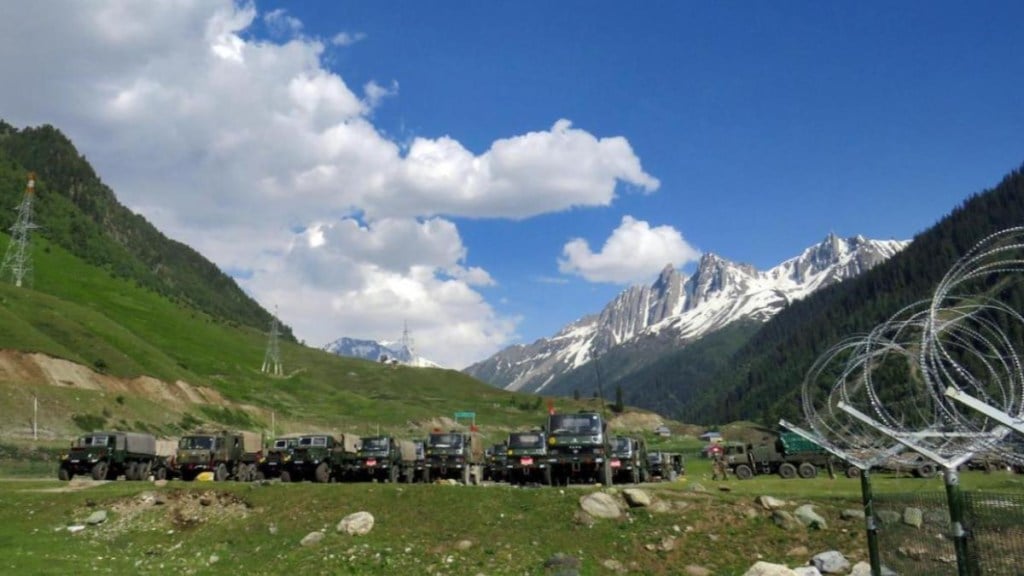As India and China continue diplomatic discussions to resolve their long-standing border disputes, recent developments have raised concerns over new Chinese demands. After four years of military standoffs along the Line of Actual Control (LAC), China has now suggested that its troops be allowed to patrol two critical areas in Arunachal Pradesh, which have historically been under Indian control.
Key Areas Under Dispute
The two locations mentioned by the Chinese are in the Yangtze region, northeast of Tawang, and the Subansiri river valley in central Arunachal Pradesh. These areas have been under Indian control for decades. The Yangtse area is particularly sensitive, having been the site of a deadly clash in December 2022 between Indian and Chinese soldiers.
Sources in the defence and security establishment have described the Chinese demands as “unreasonable” and lacking any sound logic, noting that these regions have long been under India’s administration.
In contrast, China has denied Indian troops access to patrol points (PPs) 10, 11, 12, and 13 in the Depsang Plains of eastern Ladakh since April 2020. These patrol points are crucial for maintaining India’s security along the LAC. The last Indian Army patrol to these areas was in early 2020, before the escalation of tensions. According to Indian military sources, the current dispute revolves around this patrolling access, with China preventing Indian forces from carrying out their usual activities in the region.
Jaishankar’s Acknowledgment of Patrolling Issues
In a significant development, External Affairs Minister S Jaishankar, during a recent event in the United States, acknowledged that one of the key unresolved issues in the ongoing India-China standoff is the disruption of patrolling arrangements. “The main issue right now is the patrolling,” Jaishankar said, highlighting that the established mechanisms had been disturbed since the escalation in 2020. He further described the relationship between India and China as “significantly disturbed” due to the continued standoff along the LAC.
Military experts agree that the disruption in patrolling has complicated efforts to de-escalate the situation, with Chinese troops continuing to block Indian patrols in critical areas. This has added further complexity to an already volatile situation, which has seen multiple rounds of diplomatic and military talks fail to produce lasting results.
Indian Control of Key Areas
The two spots in Arunachal Pradesh, which China is now asking to patrol, are of strategic importance. The Yangtze region has seen multiple face-offs in the past, including a significant confrontation in October 2021 when Chinese forces attempted to reach the top of a 17,000-foot-high peak that offers a commanding view of both sides of the LAC. India has maintained firm control of this peak and its access routes, making it a crucial position for Indian forces.
In December 2022, Defence Minister Rajnath Singh informed Parliament that Chinese troops had attempted to transgress the LAC at Yangtse and unilaterally alter the status quo. India successfully repelled these attempts, reaffirming its control over the region. The Subansiri valley, the second area in contention, has also witnessed skirmishes between the two sides, though it has remained under Indian jurisdiction.
The Way Forward: India’s Proposal for Resolution
Over the course of 21 rounds of military talks, India has proposed a graded three-step process for resolving the dispute in eastern Ladakh. The first step involves disengaging troops from areas where they are in close proximity, bringing them back to positions held in April 2020. The next two steps—de-escalation and de-induction—would entail reducing troop numbers and military equipment in the region, ultimately restoring the status quo ante.
Despite the ongoing negotiations, progress has been slow. The most recent rounds of diplomatic talks, including meetings of the Working Mechanism for Consultation & Coordination on India-China Border Affairs (WMCC), have yet to yield a comprehensive solution. Said a senior officer, “Disengagement at Depsang and Demchok, if it happens, will only be the first step. Until de-escalation and de-induction take place, the threat remains.”
Trust Deficit and Military Preparedness
While there have been some indications of progress in diplomatic talks, Indian defence officials remain cautious. The trust deficit between India and China remains substantial, with China continuing to build military infrastructure along the LAC. Sources in India’s defence establishment believe that China’s People’s Liberation Army (PLA) is unlikely to return to its peacetime positions anytime soon, particularly as it strengthens its forward military bases.
India, in response, has ramped up preparations for the winter months, maintaining a forward deployment of troops in eastern Ladakh and along the Arunachal Pradesh-Sikkim region. With winter approaching, the Indian Army is stocking up supplies and reviewing its operational readiness for any potential escalation.
General Upendra Dwivedi, along with other military commanders, will review the situation at a high-level meeting scheduled for October 9-10 in Gangtok, Sikkim.
